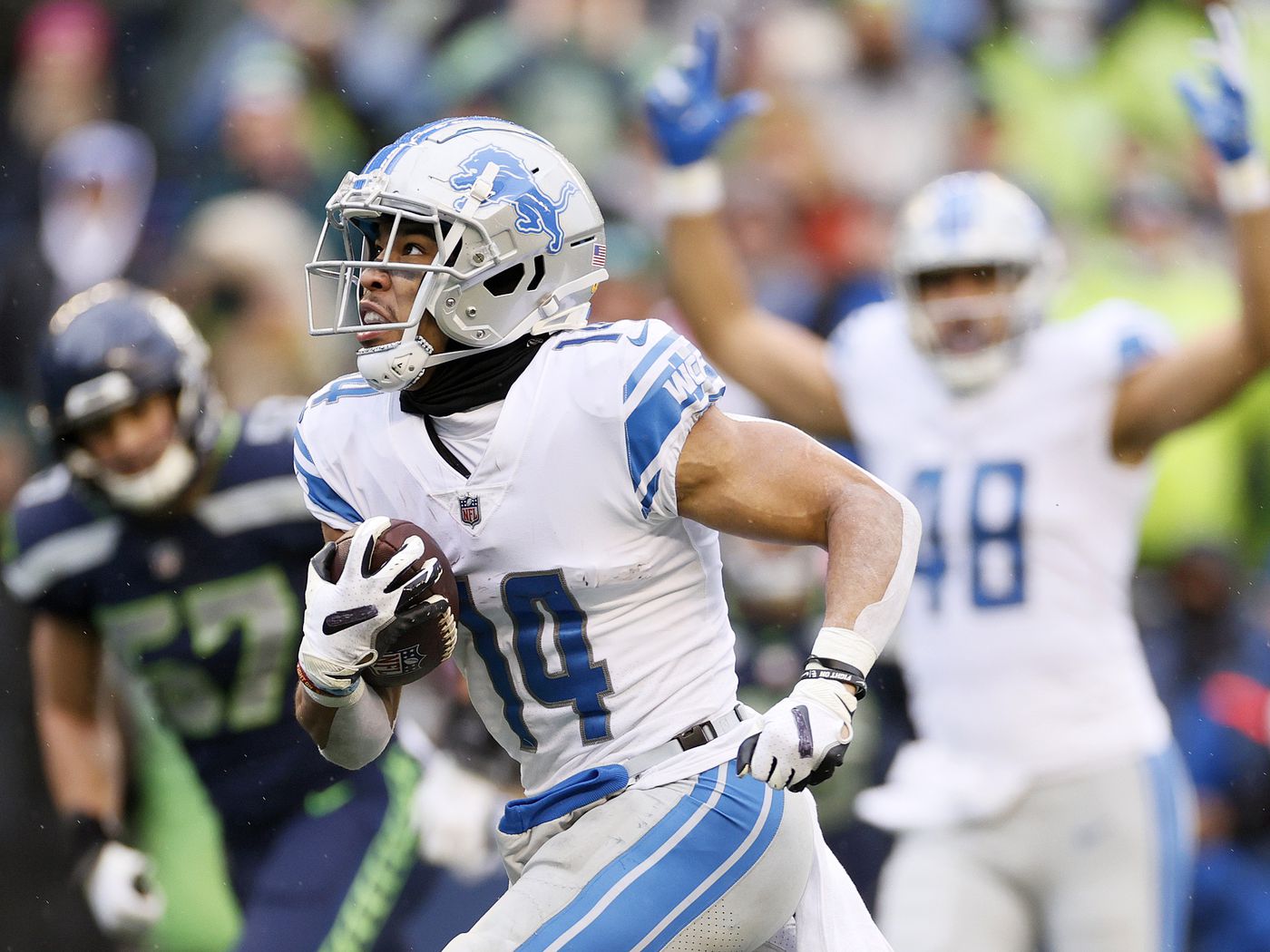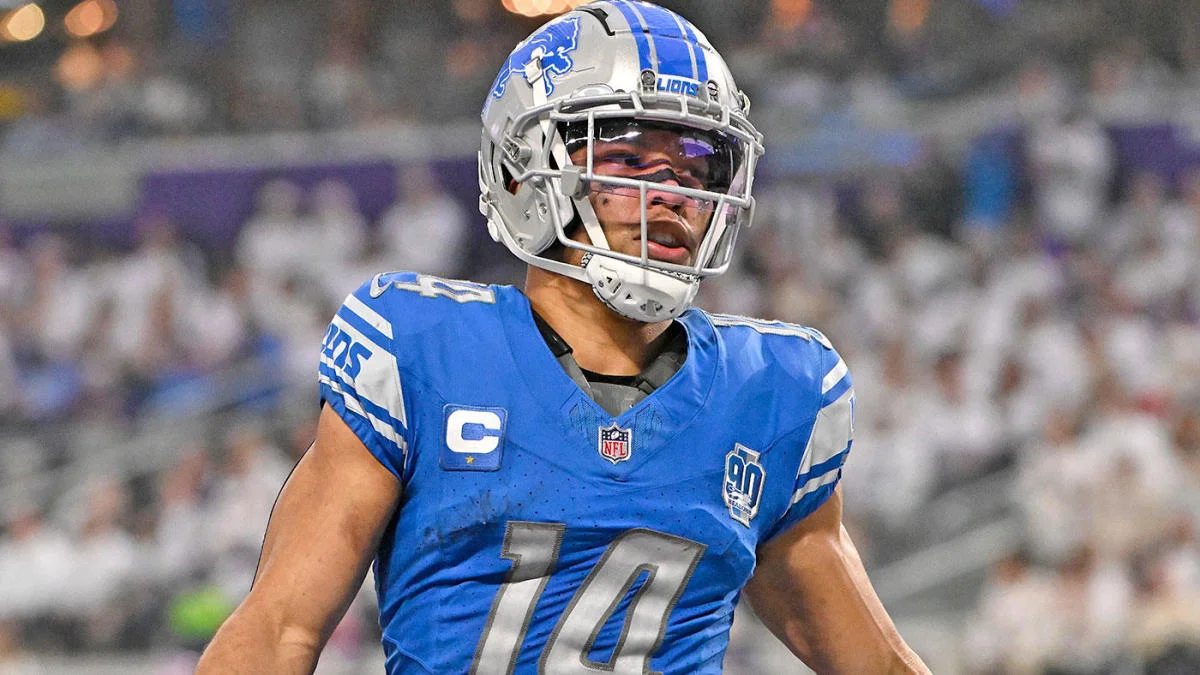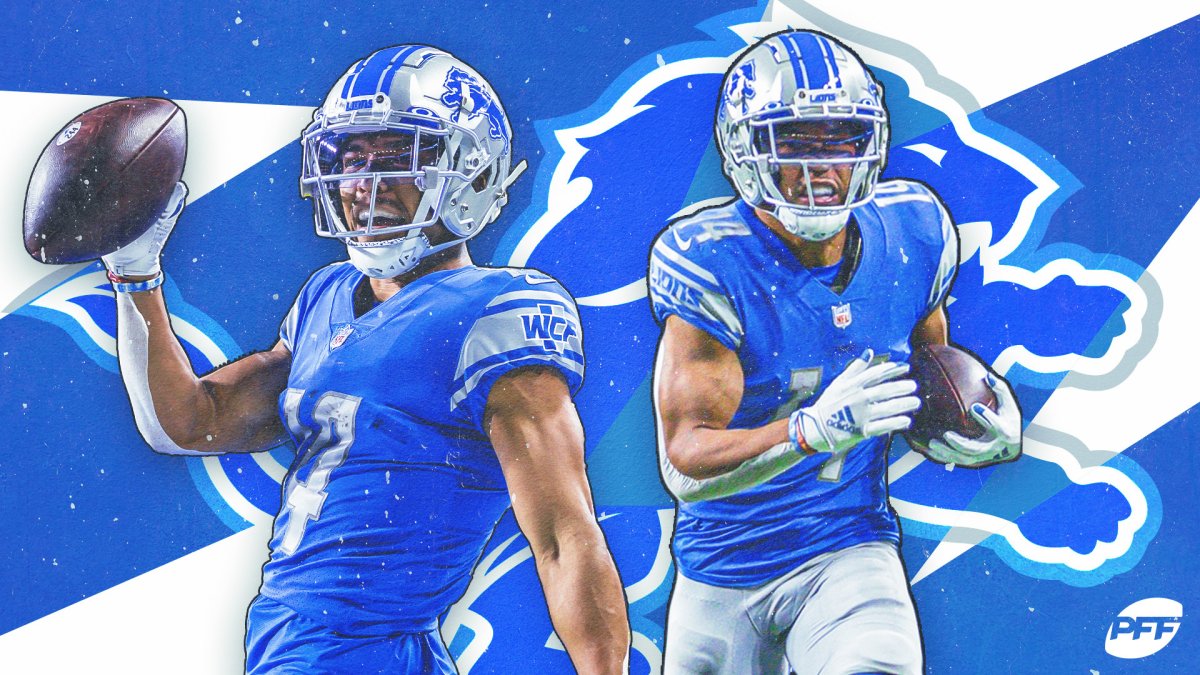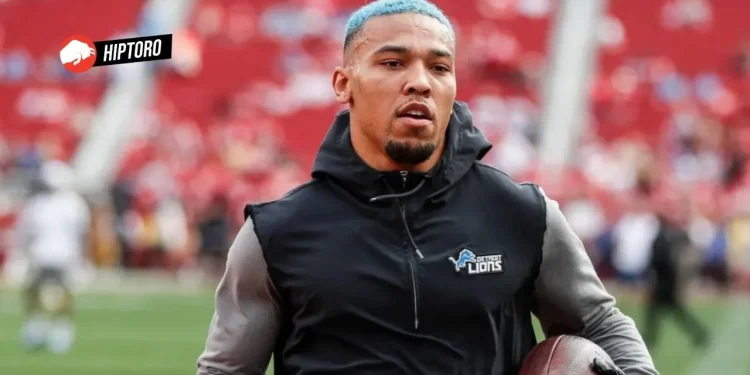Amon-Ra St. Brown, the rising star of the Detroit Lions, finds himself at the center of the NFL’s contract negotiations following the recent groundbreaking deal inked by Philadelphia Eagles wide receiver DeVonta Smith. This landmark agreement is reshaping the league’s landscape, significantly impacting the Lions’ approach to St. Brown’s contract negotiations.

A Comparative Analysis of Amon-Ra St. Brown and DeVonta Smith
Amon-Ra St. Brown selected far behind DeVonta Smith in the 2021 NFL Draft, has turned every on-field opportunity into a statement of his worth. Despite being picked in the fourth round, St. Brown’s performance has been nothing short of spectacular, boasting 315 receptions and two 100-catch seasons over three years.
In contrast, Smith, picked 10th overall by the Eagles, has accumulated 240 receptions with a high of 95 in a season. St. Brown’s impressive tally not only includes 3,588 receiving yards but also two seasons surpassing 1,100 yards, and one exceeding 1,500 yards, coupled with 21 touchdown catches and two Pro Bowl selections.

Smith’s recent three-year, $75M extension, with $51M guaranteed, has set the stage for St. Brown’s negotiations, reflecting a potentially lucrative outcome. The stark contrast in their draft positions versus their professional outputs is a testament to St. Brown’s value and determination, underscored by his memorization of every receiver chosen before him in the draft—a motivational fuel that has paid dividends.
Economic Implications in Detroit Lions’ Strategy
The financial landscape of the NFL’s receiver market was already at a peak with Tyreek Hill leading at $30M annually. Before Smith’s lucrative deal, projections placed St. Brown slightly below the $26M to $28M range. However, this new development should propel his value well into that bracket, if not higher.
Detroit Lions coach Dan Campbell has expressed that securing St. Brown’s talent is a priority, similar to the necessity of extending quarterback Jared Goff. As St. Brown approaches the end of his rookie contract in 2024, with a base salary of just $3,366,000, the urgency to conclude a favorable extension is palpable.
Amon-Ra St Brown had more games (9) with 100+ receiving yards last season than he did with under 100 (7).
He only had two games with less than 70 receiving yards.
He also scored a touchdown in 10 out of 16 games he played in.
Stud. 🌞🦁
— Joe Beldner (@JoeBeldner) April 15, 2024
The Ripple Effect on Team Dynamics and Future Negotiations
St. Brown’s impending contract negotiation is not just about retaining a top-performing receiver; it’s about the Lions’ acknowledgment of his pivotal role and his potential as a cornerstone of the franchise. A robust contract would not only reward St. Brown’s stellar performance but also solidify his position as a central figure in the team’s offensive strategy moving forward.
Moreover, this negotiation could set a precedent for how teams value draft overachievers, potentially influencing future contract discussions across the NFL. It underscores the intricate balance between draft capital invested and the actual return on the field, a calculation that teams like the Lions are now scrutinizing more closely than ever.

A Catalyst for Change
As the NFL continues to evolve, the case of Amon-Ra St. Brown exemplifies how draft day perceptions are only part of a player’s trajectory. His projected contract renewal is not merely a transaction—it’s a testament to his impact on the field and potentially a transformative moment for how similar talents are valued in the future.
In essence, as St. Brown gears up for what promises to be a significant payday, the implications ripple beyond the individual to the broader mechanics of NFL team building and contract strategy.
The Lions have a golden opportunity to lock in talent that could define their success in the coming years, underscoring the adage: sometimes, the best picks aren’t made in the first round—they’re crafted through perseverance, performance, and the right negotiation at the right time.

Source: Yardbarker









